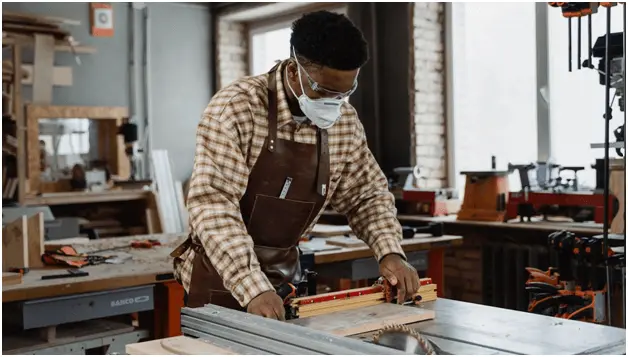A Comprehensive Overview to Learning Drywall Repair Work and Setup
This overview offers a comprehensive expedition of drywall repair work and installation, catering to both amateurs and skilled experts. It lays out necessary tools, methods for patching and hanging sheets, and the essential completing processes. drywall contractor. By recognizing typical risks, individuals can attain polished outcomes. Mastering these abilities not only improves one's home however likewise develops self-confidence in do it yourself ventures. What foundational pointers will ensure an effective job from beginning to end?
Necessary Tools for Drywall Fixing and Setup
When beginning on drywall fixing and setup, a couple of vital devices can significantly enhance the effectiveness and high quality of the work. A drywall knife, typically readily available in different sizes, is important for using joint substance and smoothing seams. A taping knife is likewise required for feathering sides and making certain a seamless coating. In addition, a drywall saw or utility blade permits accurate cutting of drywall sheets to fit any kind of area.

Step-by-Step Guide to Patching Holes
Patching openings in drywall is a simple process that can restore the wall's appearance and honesty. To start, the area around the hole must be cleaned up and any kind of loose debris removed. For little holes, an easy spackle or joint substance can be used with a putty blade. Bigger holes may call for a patch; an item of drywall can be reduced to fit the opening, safeguarded with sticky or screws, and after that taped around the sides. As soon as the patch is in place, joint compound is used over the patch and feathery bent on blend with the surrounding wall. After the compound dries out, sanding is essential to attain a smooth coating. Ultimately, the repaired location can be primed and repainted to match the remainder of the wall. This approach assures a seamless repair work, improving the general look of the drywall and maintaining its architectural integrity.
Strategies for Hanging Drywall Sheets
After successfully repairing openings in drywall, the following step entails hanging brand-new drywall sheets to produce a smooth surface. To achieve this, one should begin by determining the wall space properly and reducing the drywall sheets to fit. It is essential to hang the sheets flat for better structural honesty, beginning with the top and working downwards.
Utilizing a drywall lift can streamline the procedure, specifically for ceiling installments. When placed, protecting the sheets with drywall screws at periods of about 12 inches along the sides and 16 inches in the area is essential. This guarantees a solid hold and lowers the risk of drooping. For edges, the sheets must be cut to fit comfortably, permitting cleaner seams. Finally, it is a good idea to startle the joints in between sheets to strengthen the general structure, producing a much more resilient coating ready for the following stage in the drywall installment process.
Finishing Touches: Insulation and Mudding
Finishing the drywall installation entails the important actions of taping and mudding, which guarantee a refined and smooth finish. Insulation needs the application of joint tape over the seams in between drywall sheets. Drywall Repair Ogden UT. This tape can be either paper or fiberglass mesh, with each type offering distinct advantages. After taping, the following action is mudding, where joint compound, or "mud," is put on cover the tape and fill any type of flaws
Using a drywall blade, the substance should be spread out uniformly, guaranteeing a feathery edge to lessen noticeable modifications. Multiple layers are often necessary, with fining sand in between each layer to achieve a smooth surface. Mindful attention throughout this process is crucial, as it considerably impacts the final appearance of the wall. With the appropriate strategy and persistence, the end result will be a flawless structure all set for painting or finishing touches.
Common Errors to Stay Clear Of in Drywall Projects

An additional common error is not allowing sufficient drying out time between layers, which can trap moisture and compromise the coating. Ignoring to feather the sides appropriately can create noticeable lines and imperfections. Avoiding sanding or using incorrect methods may leave rough areas. By knowing these pitfalls, people can considerably boost the quality of their drywall jobs and accomplish a professional-looking coating.
Frequently Asked Concerns
Can I Repair Drywall Without Professional Assist?
Yes, one can fix drywall without specialist help. With the right tools, materials, and advice, people can effectively manage small repairs. Significant damages might require professional expertise for ideal results and sturdiness.
The Length Of Time Does Drywall Compound Require To Dry?
Drywall compound usually takes between 24 to two days to completely dry entirely, depending upon variables such as humidity and temperature level. Thinner layers might dry out much faster, while thicker applications need even more time for excellent results.
What's the Best Sort Of Paint for Drywall?
The finest kind of paint for drywall is generally a water-based latex paint. It provides superb insurance coverage, durability, and ease of application, making it optimal for interior wall surfaces while enabling simple cleanup with soap and water.

How Do I Avoid Mold on Drywall?
To avoid mold on drywall, assurance correct ventilation, control humidity degrees, make use of mold-resistant products, and promptly deal with any kind of leaks. Regular assessments and prompt removal of water damages are additionally important for long-lasting prevention.
Is Drywall Recyclable After Elimination?
Drywall is recyclable after elimination, supplied it is totally free from contaminants like mold, paint, or various other harmful materials. Recycling facilities can process it into brand-new products, advertising sustainability and reducing read more land fill waste in building.
When beginning on drywall repair service and setup, a couple of crucial tools can greatly improve the performance and high quality of the job. After effectively repairing openings in drywall, the next action involves hanging brand-new drywall sheets to produce a seamless surface. Finishing the drywall installment includes the crucial actions of mudding and taping, which guarantee a smooth and refined surface. Accomplishing a polished surface in drywall jobs can be difficult, and several typical mistakes can threaten the top quality of the job. Yes, one can fix drywall without professional aid.